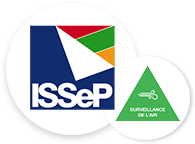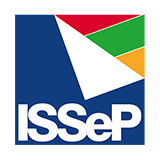Air quality models
Assessment models
(Source: IRCELINE We would like to thank the Interregional Environment Unit for its invaluable collaboration regarding the distribution of interpolation and modelling maps for Wallonia)
RIO-IFDM model
RIO is an “intelligent” interpolation technique, which standardises stations on the basis of emission and land use information to ensure that they have the same spatial representativeness. The measurement values thus obtained can be interpolated by a standard method (ordinary kriging). Then, the local character of each of the interpolated measurement points is taken into account in the last step of the procedure. The RIO interpolation technique provides results at a spatial resolution of 4x4 km2. Its temporal resolution is the same as that of telemetry measurement networks (hourly).
The RIO-IFDM model results from the coupling of the RIO interpolation method to an IFDM dispersion model based on the knowledge of the sources emitting pollutants. The latter calculates the impact of emissions of atmospheric pollutants from point and line sources on the air quality in the immediate environment of the sources. Unlike the RIO interpolation method, the IFDM model is not based on measurements, but evaluates the concentrations of air pollutants on the basis of emission data and meteorological data such as wind speed, wind direction and temperature. The combination of these two approaches makes it possible to produce maps with high spatial resolution over the whole of Belgium and is particularly suitable for representing air pollution linked to road traffic on the main network (motorways and national roads).
Predictive model
CHIMERE is a deterministic model that simulates the physical-chemical processes taking place in the atmosphere. For this, it is based on weather forecasts, emissions of pollutants in the ambient air, and the occupation of the surface. The spatial resolution used in this version of CHIMERE is approximately 50x50 km2, which means that the concentrations are representative of average values over large areas and that the actual concentrations may be higher locally (in industrial areas, nearby main roads, etc.).







